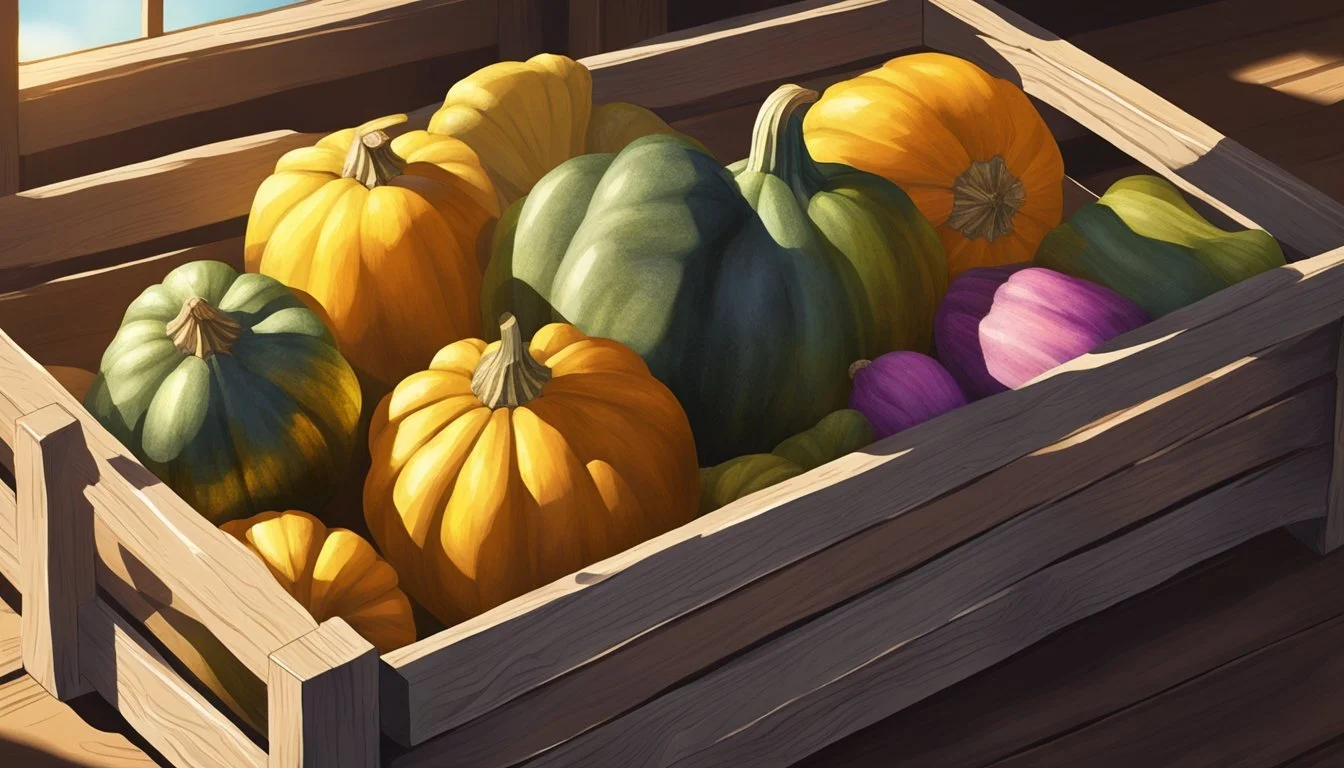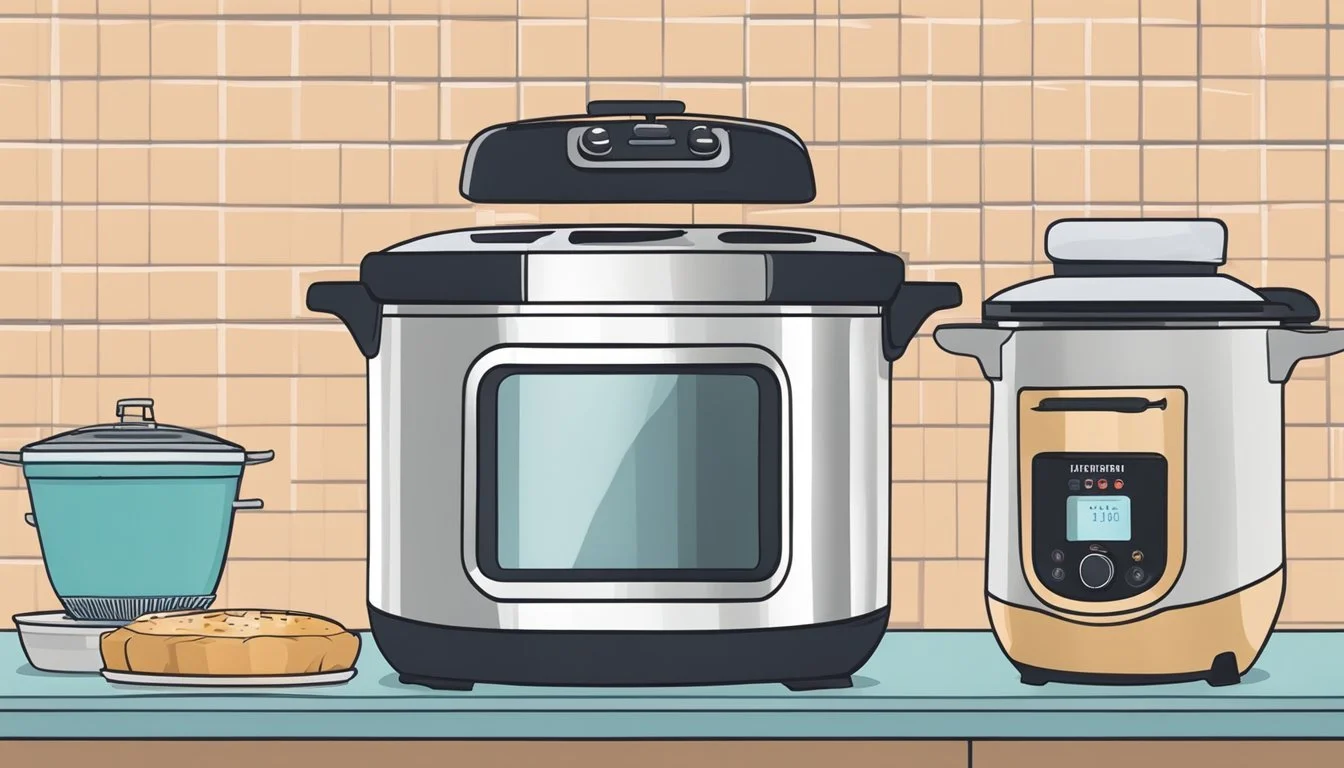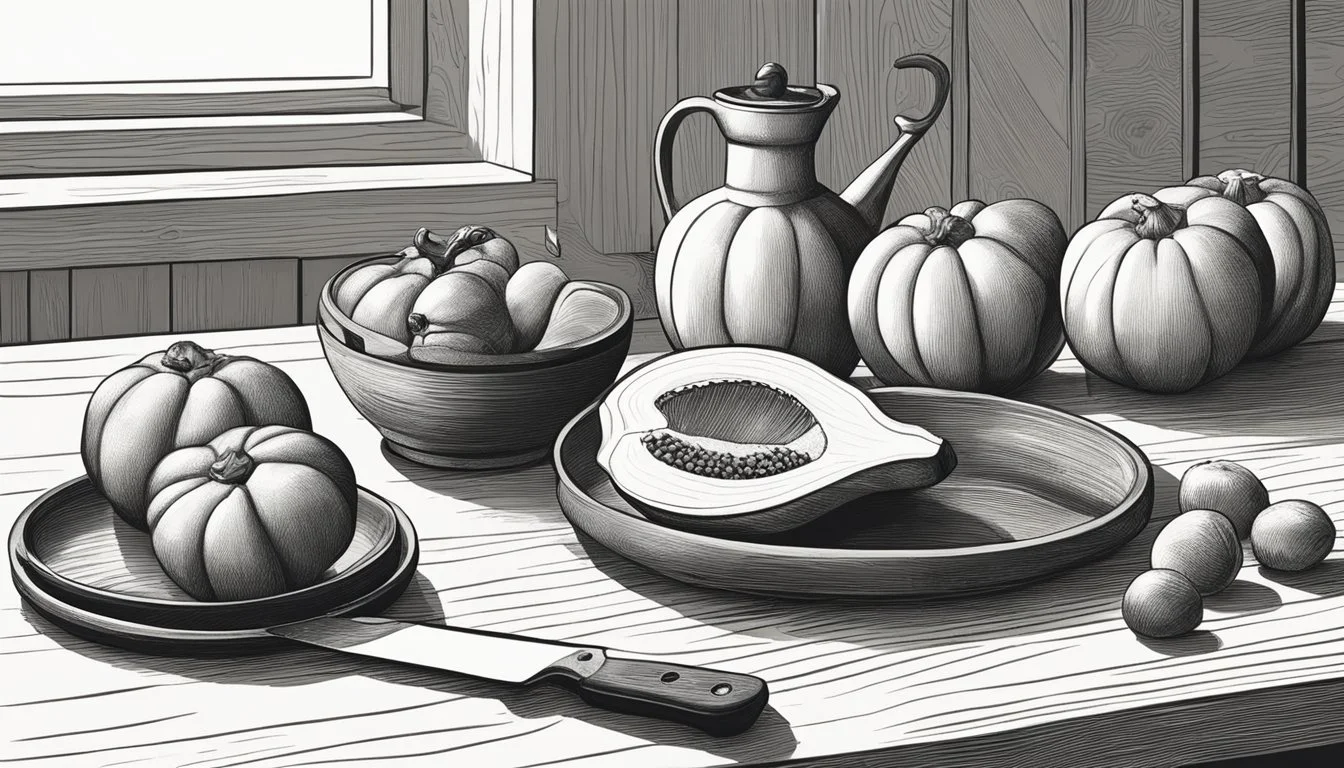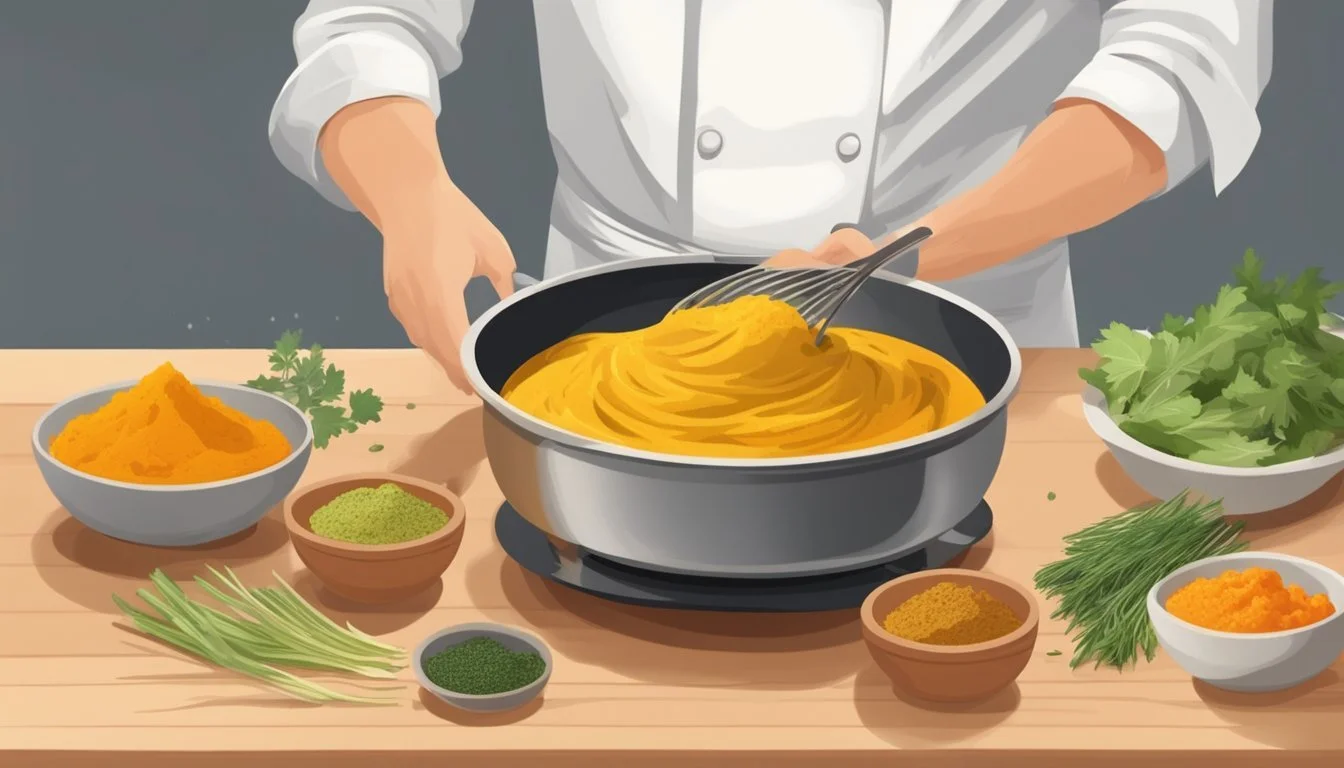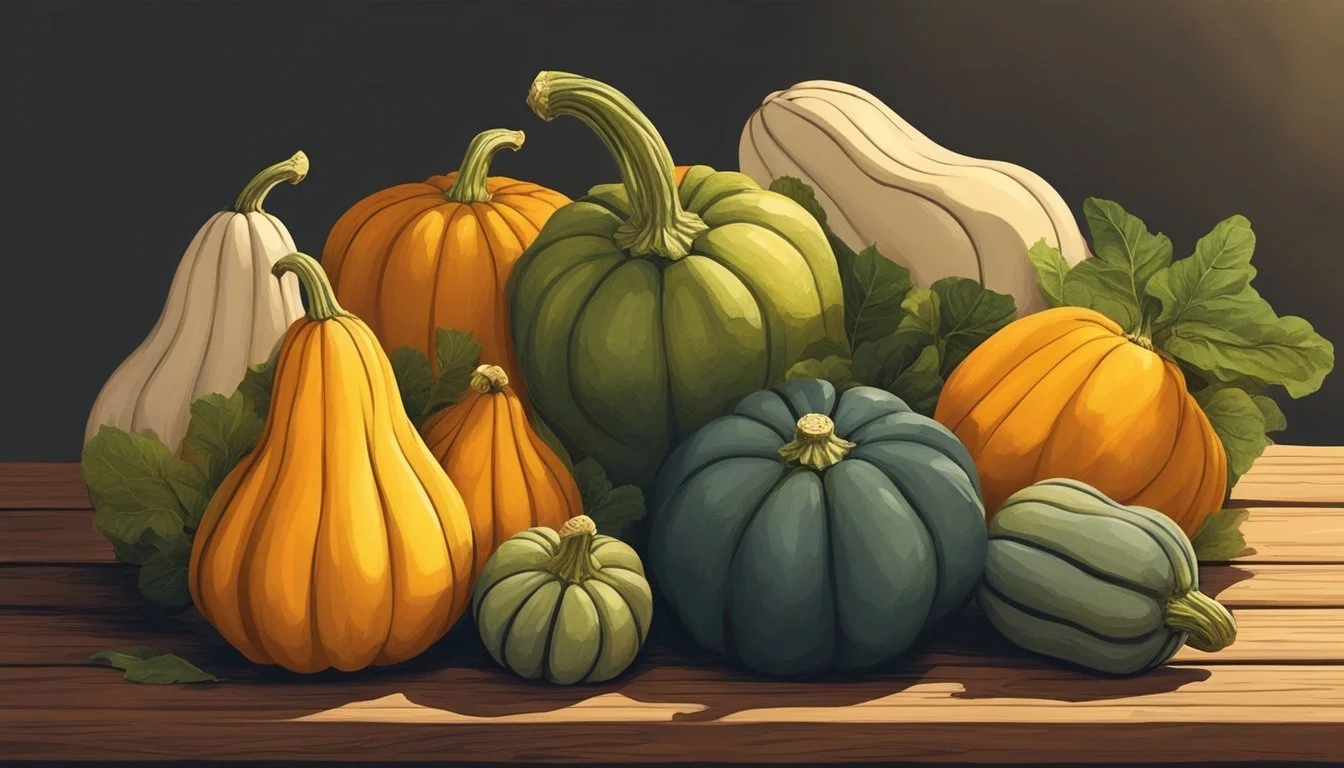Apricot and Acorn Squash Puree Recipe
A Flavorful and Nutritious Side Dish
Discover > Healthy Living Through Food > Apricot and Acorn Squash Puree
Apricot and Acorn Squash Puree is an innovative and delightful dish that combines the natural sweetness of apricots with the earthy flavors (What wine goes well with earthy flavors?) of acorn squash. This unexpected pairing creates a luscious puree that not only appeals to the taste buds but offers numerous health benefits as well. Rich in vitamins, minerals, and dietary fiber, this dish provides a nourishing and satisfying experience without compromising on taste.
The preparation of this puree is simple, making it an easy addition to any meal. By utilizing readily available ingredients and straightforward cooking techniques, this dish is perfect for a variety of occasions, from a weeknight dinner to festive gatherings. In addition, the vibrant color and velvety texture of the Apricot and Acorn Squash Puree make it an attractive and enticing side dish that pairs well with a range of main courses.
To start, cook the acorn squash until tender in a pot over medium heat, creating a creamy mixture that forms the base of the puree. The use of an Immersion Blender ensures a smooth consistency, breaking down the solid foods to achieve the desired velvety texture. This technique not only simplifies the preparation but also allows for a quick transformation of the ingredients into a delicious flavor profile.
The addition of apricots brings a burst of natural sweetness to the puree, balancing the mild flavor of acorn squash. Season with salt and black pepper to enhance the savory flavors, creating a complex flavor profile that will undoubtedly elevate your dinner table experience. A pinch of Kosher salt (how long does kosher salt last?) adds a final touch, ensuring the perfect balance of flavors in every bite.
Designed with both flavor and nutrition in mind, Apricot and Acorn Squash Puree offers a harmonious blend of health and taste. The undeniable goodness of this versatile side dish is sure to leave you coming back for more, making it an essential staple in any culinary repertoire. As you serve this delightful puree during the winter months or incorporate it into your meal plans, its delicious and comforting qualities are bound to make it a favorite on your dinner table in just a couple of minutes.
Understanding Squashes
Squashes belong to the Cucurbitaceae family, which includes a variety of plants like pumpkins, cucumbers, and melons. They are generally classified into two main categories: winter squashes and summer squashes.
In this section, we will focus on some popular winter squashes such as acorn squash, and butternut squash (how long does butternut squash last?), and their similarities and differences with some common summer squashes like yellow squash and zucchini.
Winter Squashes: Winter squashes typically have a hard, thick skin that enables them to be stored for long periods. This attribute is a distinguishing factor for these squashes, as it sets them apart from their summer counterparts. Acorn squash is one such winter squash, characterized by its dark green, ridged skin, and sweet, slightly nutty flavor. Another popular winter squash is butternut squash, known for its tan-colored skin and sweet, creamy texture.
Acorn Squash
Appearance: Dark green, ridged skin
Flavor/Texture: Sweet, nutty flavor; firm texture
Butternut Squash
Appearance: Tan-colored skin
Flavor/Texture: Sweet, creamy texture
Summer Squashes: Unlike winter squashes, summer squashes have delicate, thin skin that makes them less suitable for long-term storage. They are harvested when immature, resulting in tender flesh and a milder flavor. Two common summer squashes are yellow squash and zucchini. Yellow squash has a vibrant yellow skin and mildly sweet taste, while zucchini is dark green and features a milder, slightly earthy flavor.
Yellow Squash
Appearance: Yellow skin
Flavor/Texture: Mildly sweet taste; tender flesh
Zucchini
Appearance: Dark green skin
Flavor/Texture: Earthy flavor; tender flesh
Understanding the various types of squashes will help you choose the right one for your recipes, such as the Apricot and Acorn Squash Puree. Each squash brings its unique qualities, textures, and flavors to dishes, making it essential to select the one that complements your dish best.
Health and Nutritional Profile
Apricot and acorn squash puree is a healthy and nutritious dish that offers numerous health benefits. Packed with essential vitamins, minerals, and fiber, this puree can be a delicious addition to any meal.
Nutrition Facts (per 100g):
Calories: 48 kcal
Vitamin C: 9.5 mg
Potassium: 447 mg
This table is based on USDA food database information
One of the key components of this puree, apricots, is known for being a good source of vitamin C. This essential vitamin plays a crucial role in maintaining a healthy immune system and also acts as a powerful antioxidant, protecting cells from damage caused by free radicals. Additionally, apricots contain a significant amount of potassium, which helps maintain normal blood pressure, nerve function, muscle control, and overall balance of bodily fluids.
Acorn squash, on the other hand, offers a variety of health benefits. Rich in fiber, this squash promotes healthy digestion and helps regulate blood sugar levels. Moreover, it is a good source of vitamin A, which supports vision health, a strong immune system, and healthy growth and development.
When combined, apricot and acorn squash puree presents a dish full of essential nutrients for a well-rounded meal. This puree is relatively low in calories, making it an excellent option for those who are looking to maintain or lose weight while still enjoying a flavorful and satisfying dish. The combination of vitamins, minerals, and fiber found in these ingredients is essential for maintaining optimal health on a day-to-day basis.
Gathering and Preparing Ingredients
To create the delicious Apricot and Acorn Squash Puree, it's essential to first gather and prepare all the necessary ingredients. Doing so will ensure a smooth and efficient cooking process. Here are the required ingredients for this recipe:
1 medium acorn squash
6-8 dried apricots (how long do dried apricots last?)
1 cup of water
2 tablespoons of butter
¼ teaspoon of salt
¼ teaspoon of ground pepper
⅛ teaspoon of ground nutmeg (how long does nutmeg last?)
⅛ teaspoon of ground ginger
Begin by preheating the oven to 400°F (200°C). Using a sharp knife, carefully cut the acorn squash in half and discard the seeds. Place the halves in a baking dish, with the cut side facing down. Bake for 45 to 50 minutes or until the squash is tender. Allow it to cool for a few minutes before scooping out the flesh.
To prepare the dried apricots, place them in a heat-proof bowl and pour boiling water to submerge them. Let them sit for 10-15 minutes, after which they'll become soft and plump. Drain away the water, and dice the hydrated apricots into small pieces.
Once the acorn squash and apricots are prepped, gather the remaining ingredients. These include the water, butter, and the remaining seasonings: salt, pepper, nutmeg, and ginger. Ensure that the spices are carefully measured, with each one labeled boldly to avoid mix-ups.
With all the ingredients ready, you're now prepared to combine them to create an excellent Apricot and Acorn Squash Puree. Following these steps ensures a confident and knowledgeable execution of the recipe, resulting in a dish that's sure to impress anyone who tastes it.
Equipment and Tools Needed
To make a delicious Apricot and Acorn Squash Puree, you need to gather the necessary equipment and tools beforehand. This section outlines the items required, ensuring a smooth and efficient cooking process.
First, you will need an oven for baking the acorn squash, which is the foundation of the puree. Use aluminum foil or parchment paper to line a baking tray before placing the halved squash in the oven.
For cooking apricots, a medium-sized saucepan is required. The saucepan allows for even heating and prevents the apricots from sticking to the bottom. To save time and energy, consider using an Instant Pot to steam the apricots.
Once your acorn squash and apricots are cooked through, the next step is to puree them together. There are several options for this, with the most common and efficient tool being a food processor. A high-quality blender can also get the job done.
Table for Equipment and Tools Required:
Oven - Baking acorn squash
Aluminum foil - Lining baking tray
Parchment paper - Lining baking tray (alternative)
Saucepan - Cooking apricots
Instant Pot - Steaming apricots (alternative)
Food processor - Pureeing squash and apricots
Blender - Pureeing squash and apricots (alternative)
In addition to these primary tools, a fork will help check the doneness of your squash by piercing its flesh. The fork can also be used to mash apricots for a coarser texture if preferred, although the result will be less smooth compared to using a food processor or blender. It's essential to have these basic tools at your disposal to make a perfect Apricot and Acorn Squash Puree.
Lastly, storage equipment is essential for preserving your finished puree. If not consumed immediately, the Apricot and Acorn Squash Puree can be kept in the refrigerator for up to three days or in the freezer for longer-term storage. Use an airtight container to maintain freshness and prevent contamination.
Step-by-Step Recipe
The Apricot and Acorn Squash Puree recipe is an incredible dish, packed with rich flavors and nutrients. This section provides a clear and easy-to-follow step-by-step guide to help you make this delicious puree. So, let's get started.
Preparation:
Acquire the following ingredients:
1 large acorn squash
1 cup dried apricots (chopped)
1/4 cup water
1 tbsp unsalted butter
1/4 tsp cinnamon
Salt and pepper to taste
Preheat your oven to 400°F (200°C).
Carefully cut the acorn squash in half and remove the seeds.
Roasting the squash:
Place the squash halves, cut side down, on a baking sheet lined with parchment paper.
Roast the squash in the preheated oven for 45-50 minutes, or until it becomes tender.
Rehydrating the apricots:
In a small saucepan, combine the chopped apricots and water.
Simmer on low heat for about 10 minutes until the apricots are soft and have absorbed the water. Set aside.
Pureeing the squash and apricots:
Remove the roasted squash from the oven and let it cool for a few minutes.
Once cooled, scoop out the flesh of the squash and place it in a food processor.
Add the rehydrated apricots, butter, cinnamon, salt, and pepper to the food processor.
Process until a smooth and creamy puree is formed.
Serving:
Transfer the puree to a serving bowl.
Garnish with a sprinkle of cinnamon and a few chopped apricots (optional).
Serve warm as a side dish or a delightful dessert.
By following the above steps, you will have created a delicious and nutritious Apricot and Acorn Squash Puree that can be enjoyed by all members of your household. The roasting process ensures that the flavors of the squash complement the sweetness of the apricots, creating a beautiful harmony in your taste buds.
Dishes to Prepare with Squash Puree
Squash puree is a versatile and nutritious ingredient that adds a creamy texture and subtle sweetness to various dishes. Here, we will explore a variety of recipes that incorporate acorn squash puree and other similar purees, such as pumpkin puree, into delicious and satisfying meals.
Soups are one of the most common and delicious ways to utilize squash puree. A rich and velvety acorn squash soup recipe can make a perfect side dish or main course during the colder months. Combining squash purée with ingredients like coconut milk, ginger, and garlic creates a soup that is both flavorful and healthy. It's worth noting that pumpkin puree can be used as a substitute for acorn squash puree in soups, offering a slightly different taste and texture for experimentation.
When it comes to baby food, squash puree is a nutritious and appropriate choice. Acorn squash is a good source of vitamins, minerals, and fiber, essential for a baby's growth and development. Simply steam or roast the squash and blend it to create a smooth puree for your little one. You can also mix it with other fruit or vegetable purees for a more diverse meal.
For those with a sweet tooth, incorporating squash puree into muffins and pancakes is an excellent way to add a boost of nutrition to your breakfast or dessert. Try combining acorn squash puree with cinnamon, nutmeg, and sweeteners like maple syrup (how long does maple syrup last?) or honey to make fluffy pancakes or muffins. Pumpkin puree can also be used as a substitute in these recipes for a delicious twist.
Lastly, for a savory and hearty meal, consider using squash puree as a base for chilis. Adding acorn squash or pumpkin puree to your chili recipe can create a unique flavor profile and enhance the dish's consistency. The puree pairs well with various proteins, such as beef, turkey, or beans, allowing for customization according to your taste preferences.
Squash puree is an adaptable and nutritious ingredient that can enhance the taste and texture of various dishes. From soups and baby food to muffins and chilis, there are plenty of ways to incorporate squash puree into your cooking for satisfying and tasty results.
Storing and Freezing Puree
When it comes to storing and freezing your apricot and acorn squash puree, proper guidelines need to be followed to ensure optimal taste and texture upon consumption. Here is a concise guide to help you with the process:
Before jumping into freezing, let's discuss short-term storage. If you plan on consuming the puree within a day or two, simply store it in the refrigerator. Use an airtight container, ensuring it is sealed well to maintain freshness. Refrigerated puree can last for up to 3 days.
If you intend to store your puree for an extended period, freezing is the way to go. Follow these steps for successful freezing and optimal flavor retention:
Cool the puree: Before placing the puree in the freezer, allow it to cool to room temperature.
Portion the puree: Divide the puree into meal-sized portions using airtight containers or freezer-safe bags, leaving some space for expansion during the freezing process.
Label the containers: Use a permanent marker to label the containers with the date and contents. This practice will help with organization and make it easier to find what you're looking for in your freezer.
Lay the bags flat: When using freezer-safe bags, remove excess air and lay them flat to stack them efficiently and save freezer space.
Freeze the puree: Place the containers or bags in the freezer, ensuring they have enough space around them for proper air circulation.
Thawing the puree is just as crucial to maintain its overall quality. Here are some methods you can use:
Refrigerator thawing: Place the frozen puree in its container or bag in the refrigerator and let it thaw for several hours or overnight. This method is considered the safest for retaining the puree's texture.
Cold water thawing: Place the sealed bag of frozen puree in a bowl of cold water, changing the water every 30 minutes until completely thawed. Avoid using warm or hot water since it could cause uneven thawing and spoil the puree.
As a reference, here's a table on puree storage duration:
Storage Method - Duration:
Refrigeration: 1-3 days
Freezing: 3-4 months
Remember to use proper food handling practices, clean tools, and surfaces, and consume the thawed puree within 3 days after thawing to ensure optimal taste and quality.
Shopping for Squash
When shopping for squash, especially apricots and acorn squash, it is essential to pay close attention to their appearance and feel. To select the best produce, follow these tips:
Color: Choose apricot squash with a rich orange color, indicating ripeness. For acorn squash, look for a deep green hue with a splash of orange. Avoid squash with dull colors or blemishes, as these can signify spoilage.
Texture: A ripe squash should have a firm texture, without soft spots or wrinkling. A quick test is to press your finger against the skin. If the squash feels hard and doesn't yield to pressure, it is ripe and ready to be used in your puree.
When buying squash, it's helpful to be familiar with the common varieties to choose from:
Apricot:
Small, round, and orange
Perfect for purees and roasting
Known for its sweet, aromatic flavor
Acorn:
Dark green with ridges
Works well in purees or as a side dish
Has a mild, earthy flavor
Butternut:
Pear-shaped with light tan skin
Popular in soups, stews, and bakes
Has a sweet, nutty taste
Spaghetti:
Oblong and yellow
A versatile option
Unique stringy texture resembles pasta
Keep in mind that squash is usually sold by weight, so a larger squash will cost more. However, it may also yield more portions of your delicious apricot and acorn squash puree.
Squash can be found in most grocery stores, particularly in the produce section. When possible, opt for a store that sources produce locally and in-season, as this is typically fresher and of higher quality. Visiting a farmers market can also be a great option for finding fresh, high-quality squash.
Lastly, consider the stem. A healthy stem is a good indicator of the squash's overall freshness. Look for a firm, well-attached stem that is neither too dry nor overly moist. Checking the stem will help ensure that your squash is at its peak and ready to be used in a puree.


